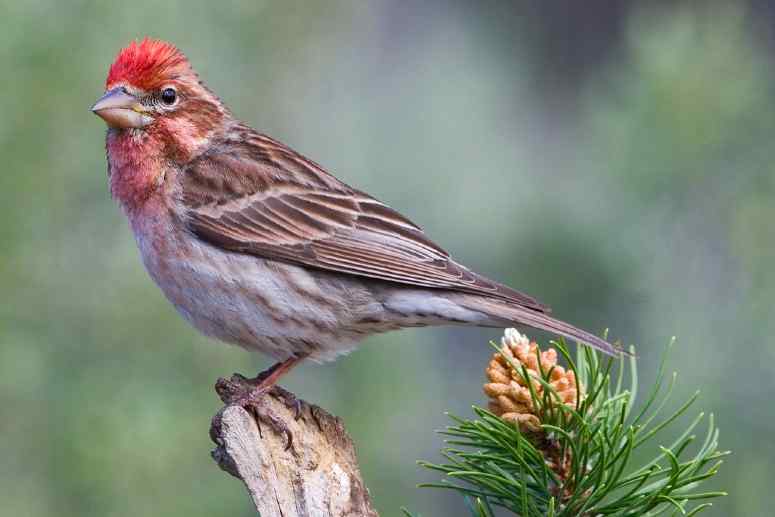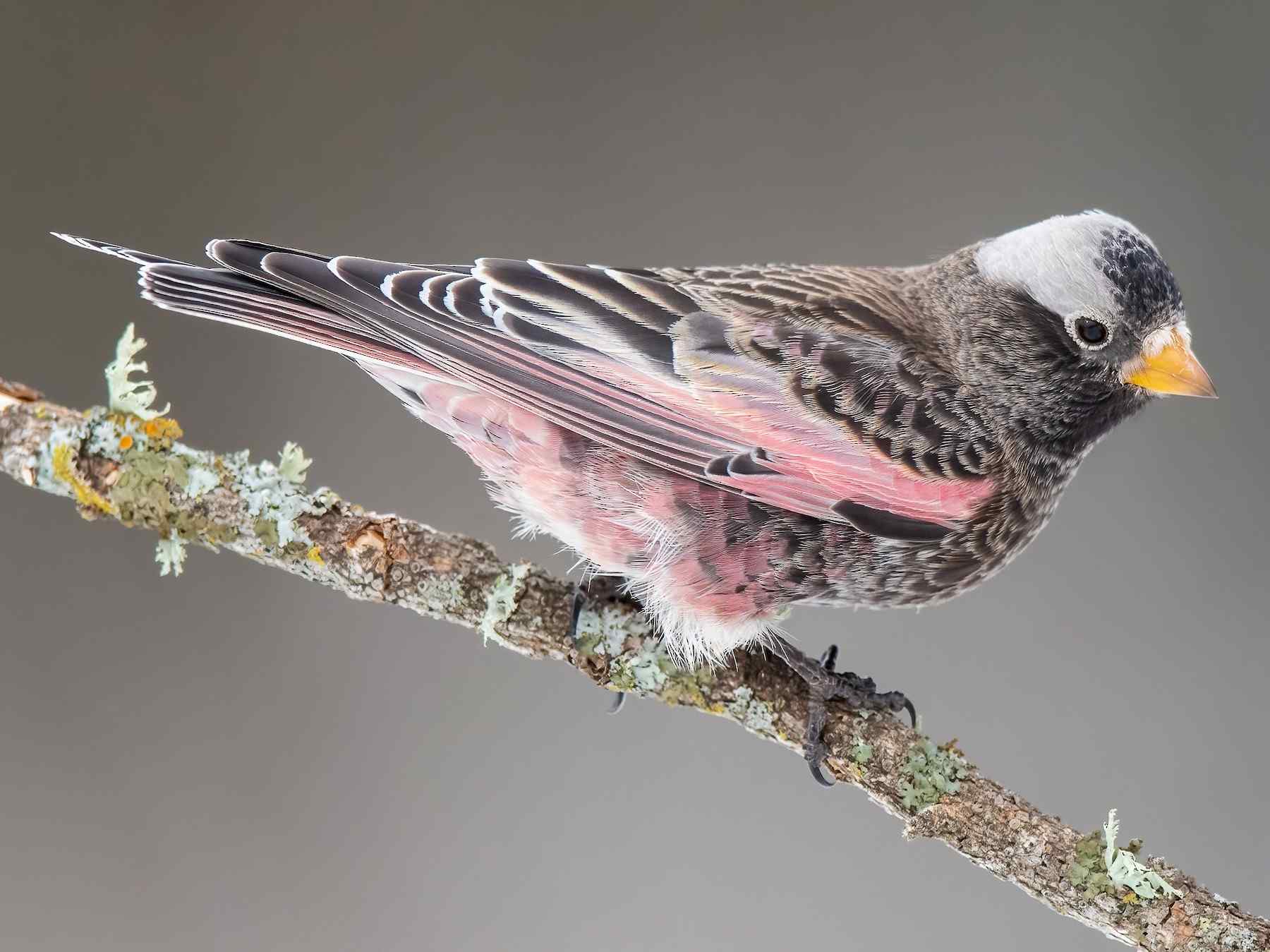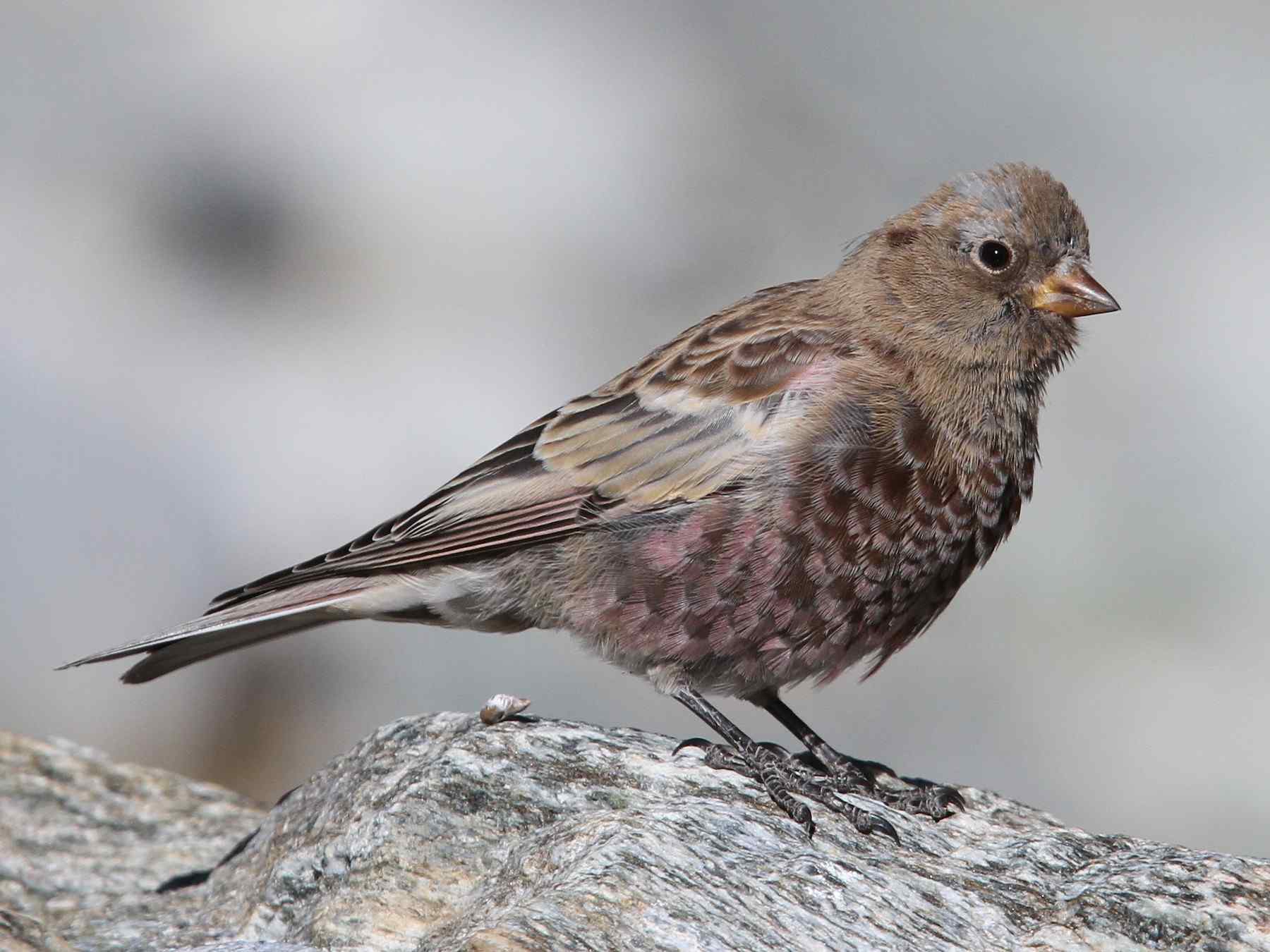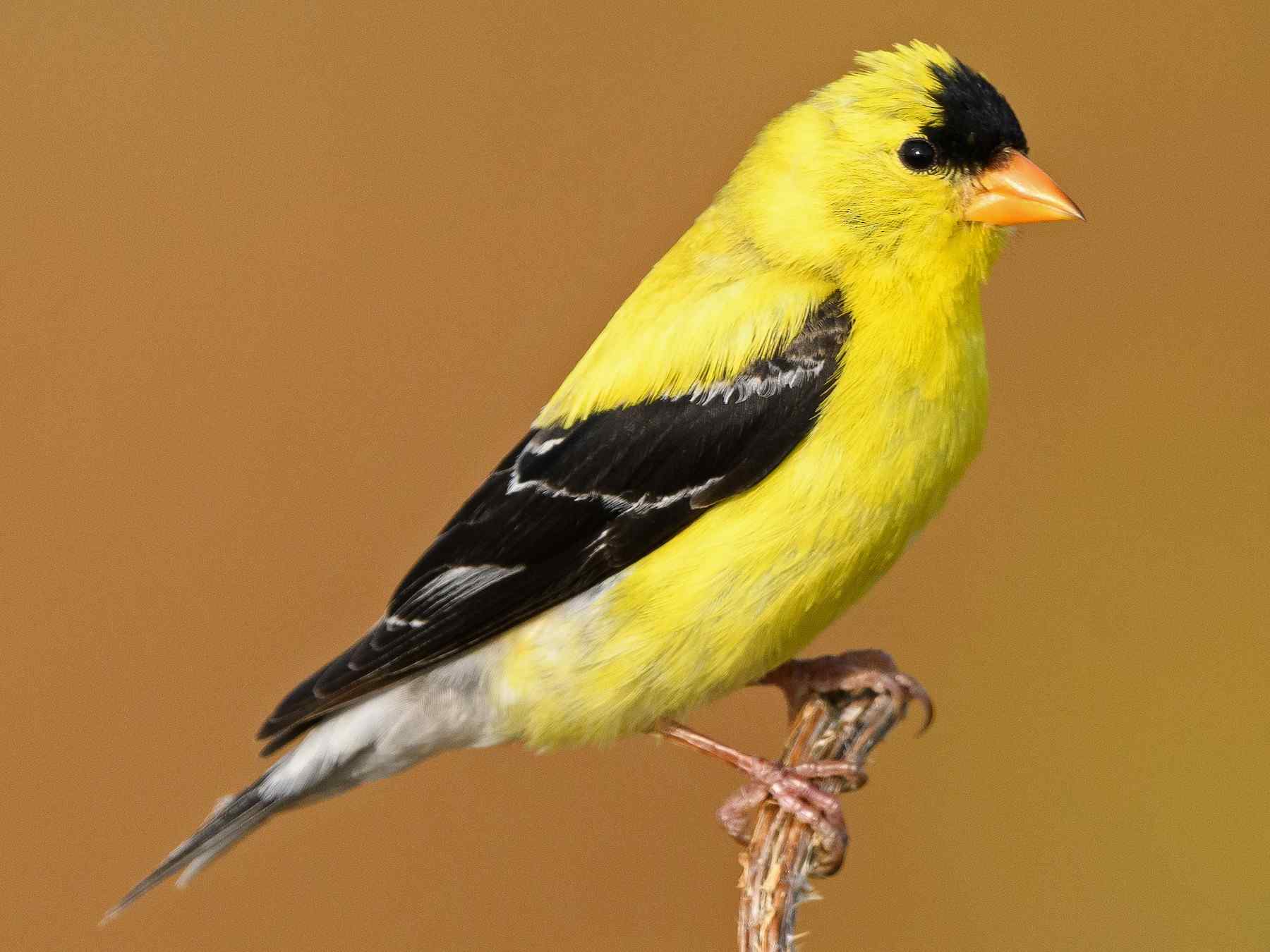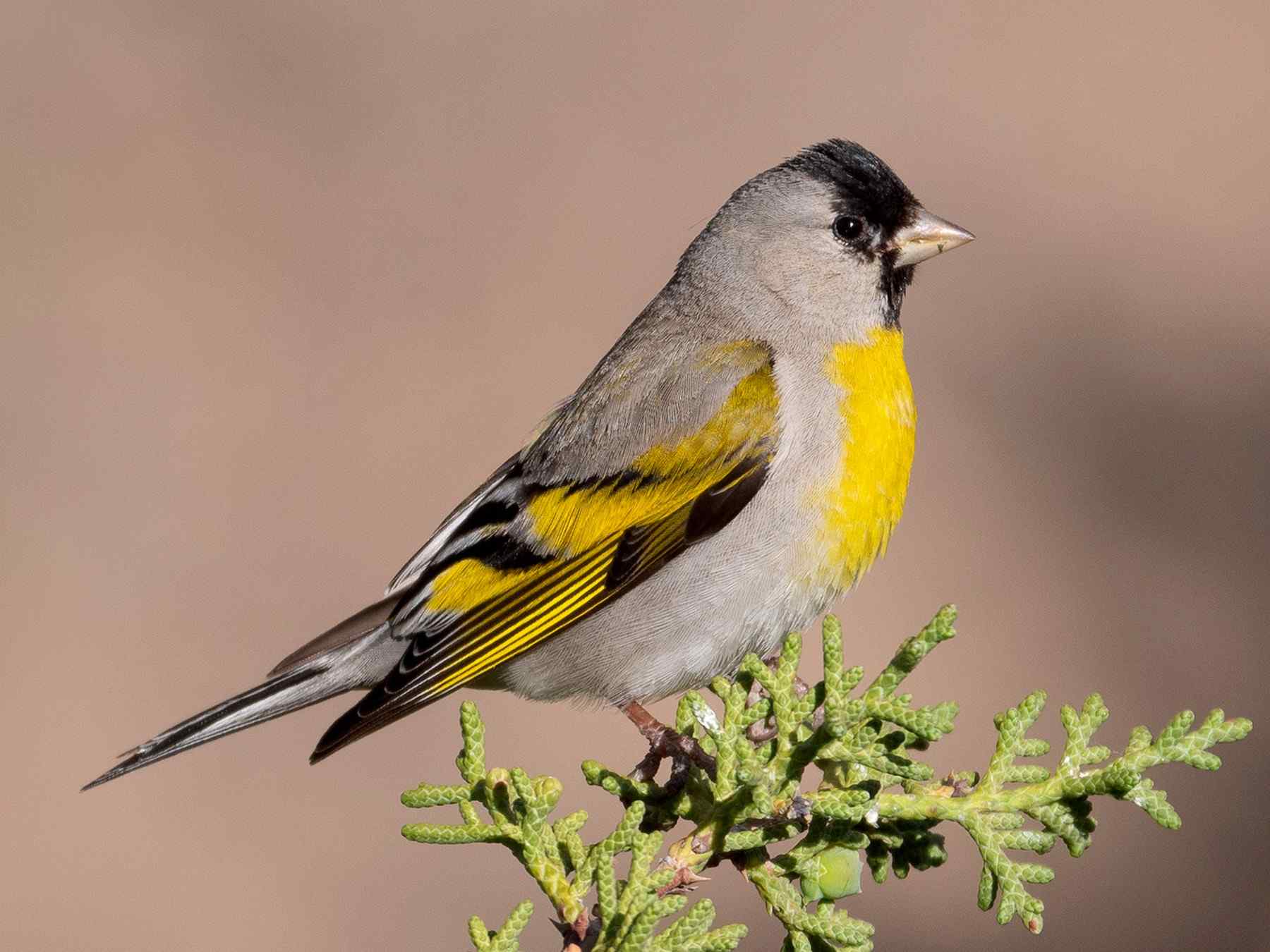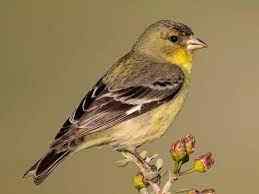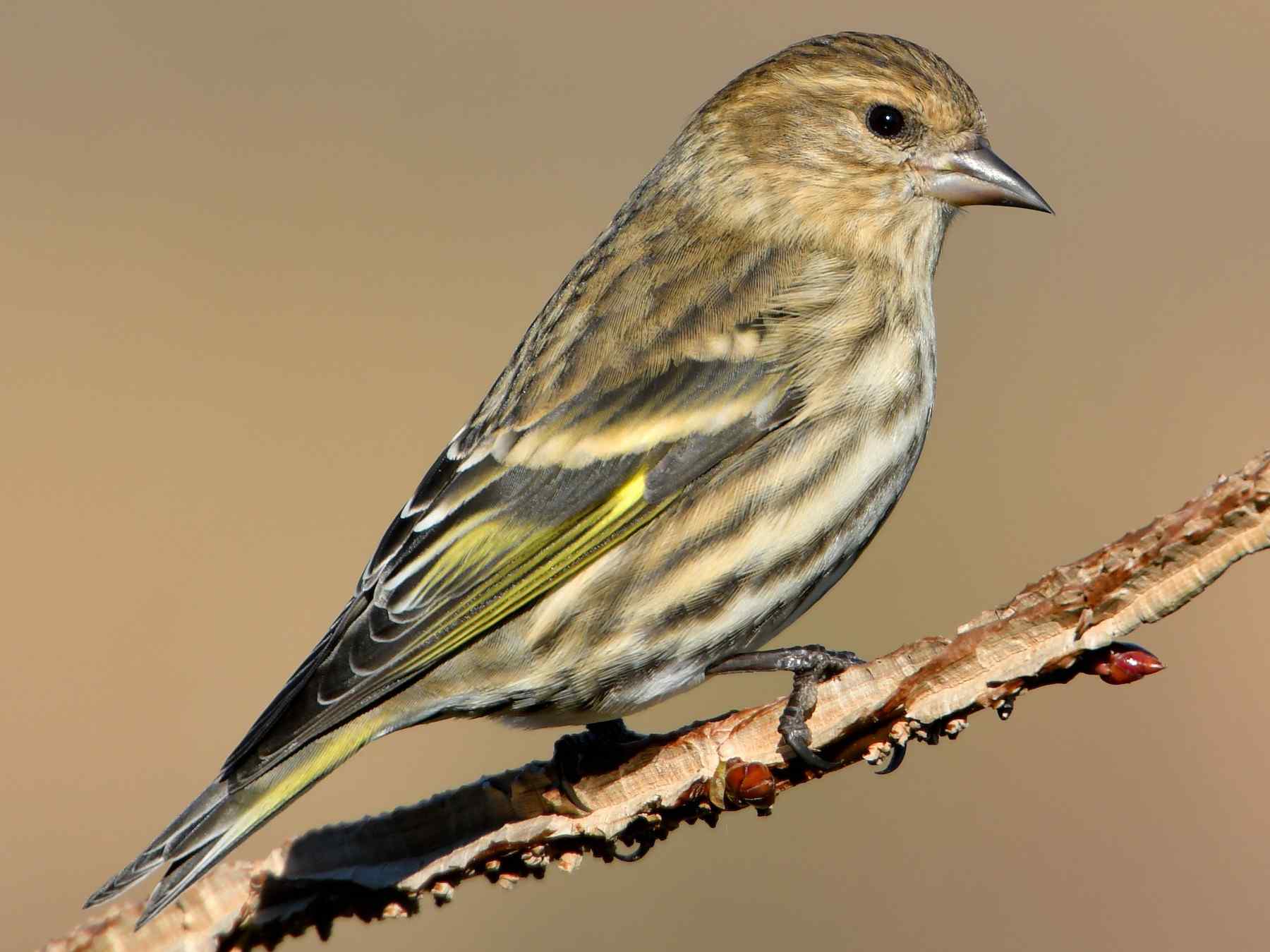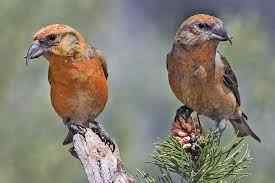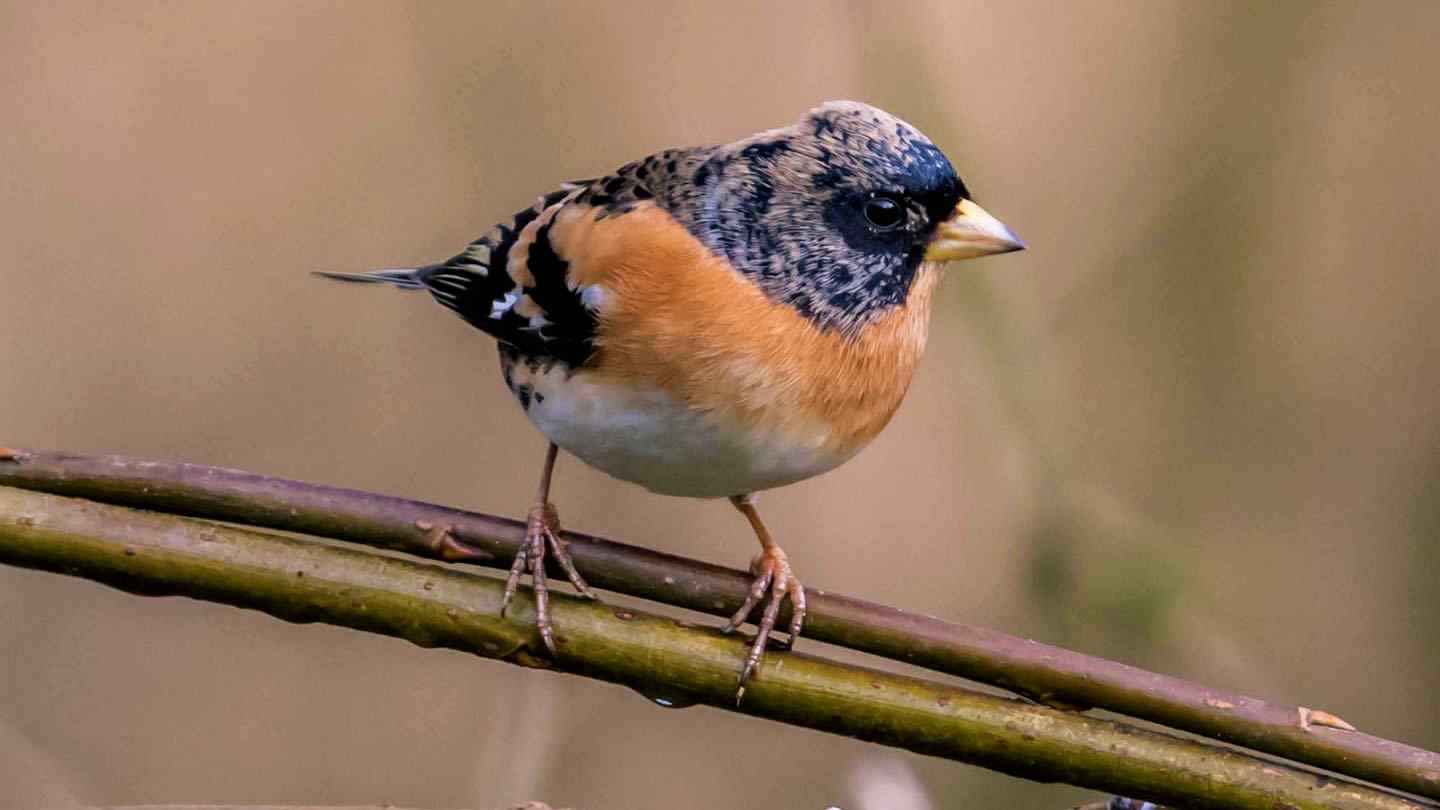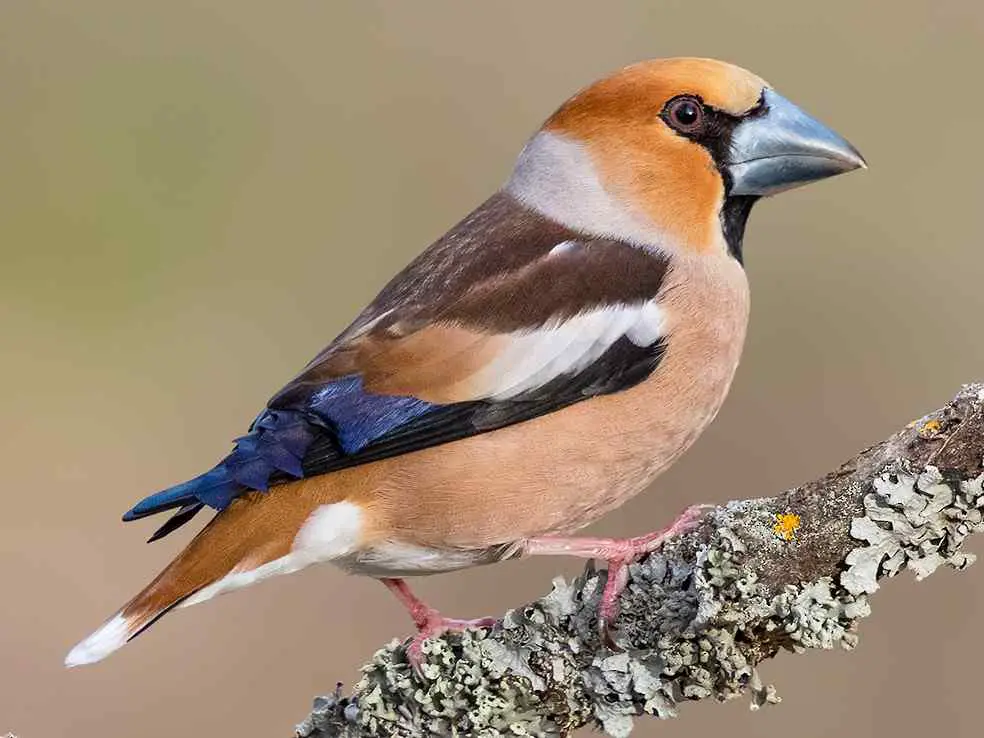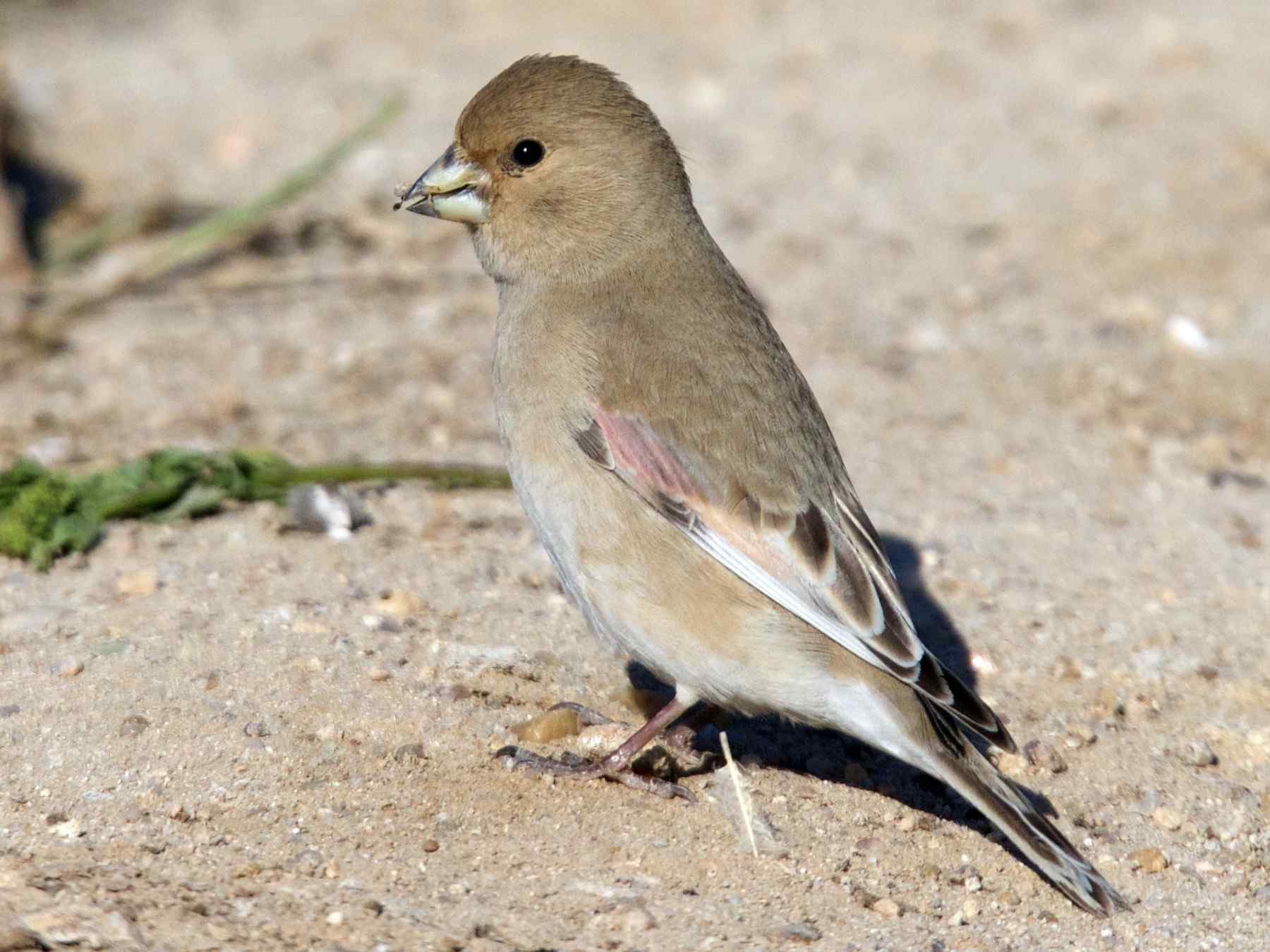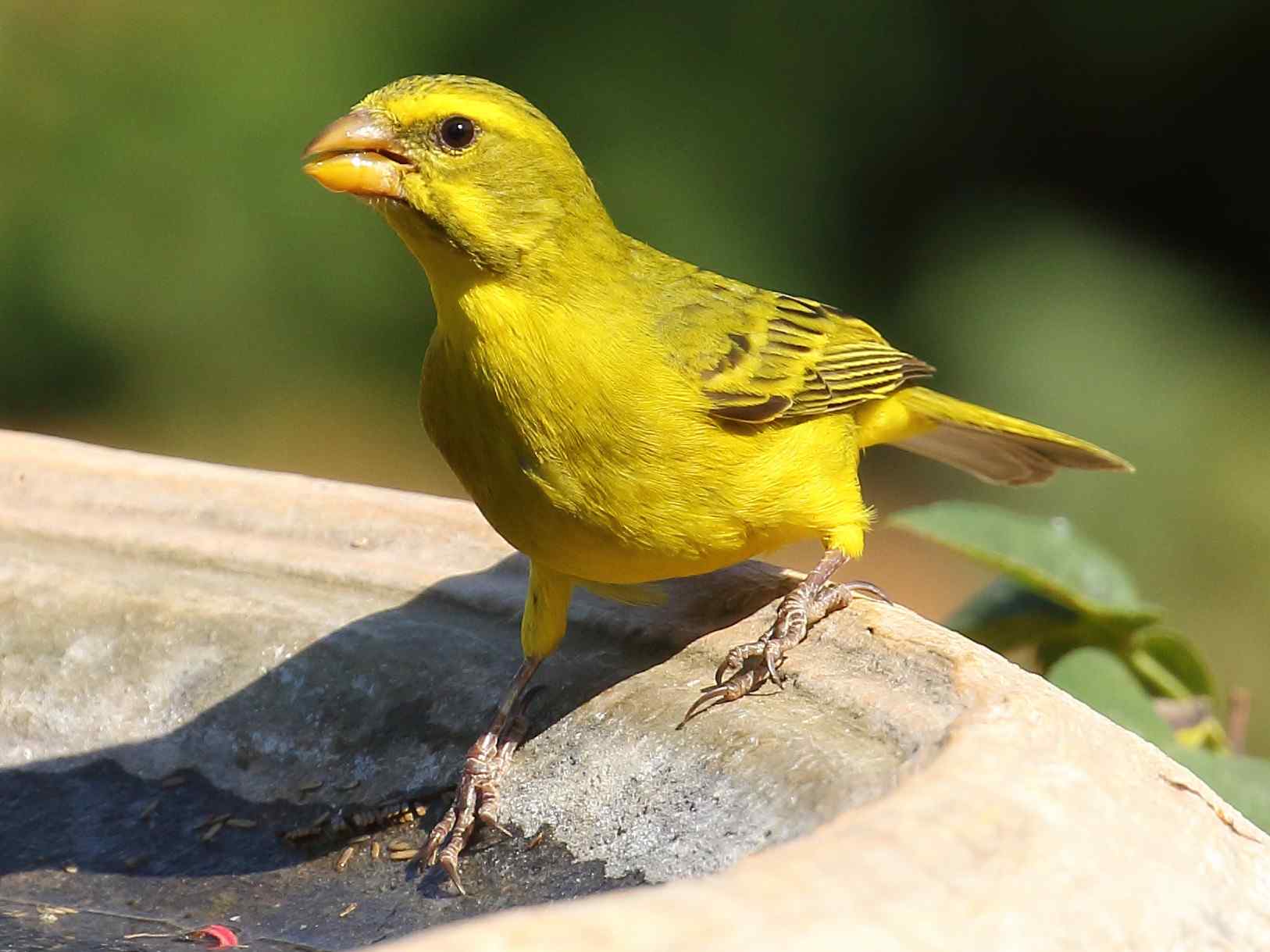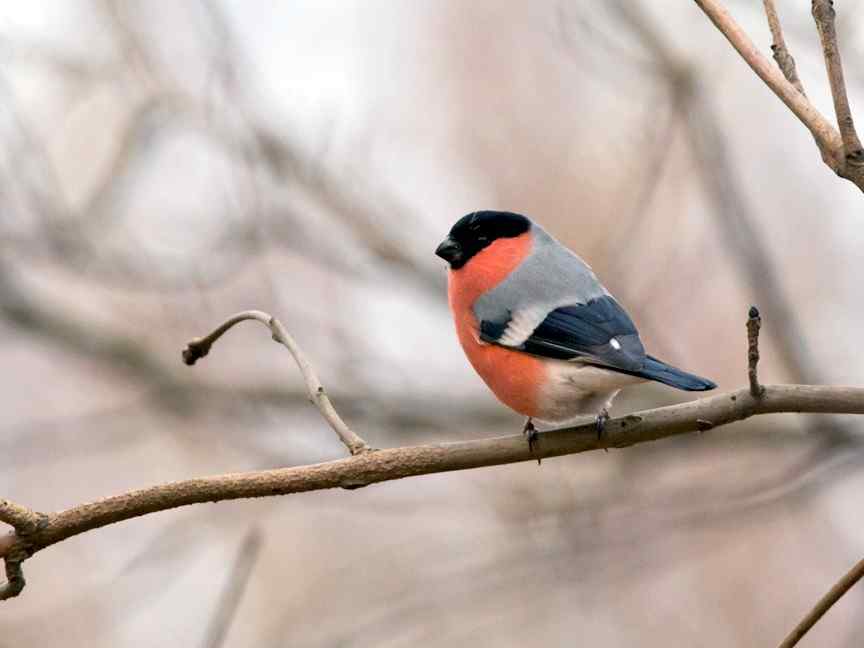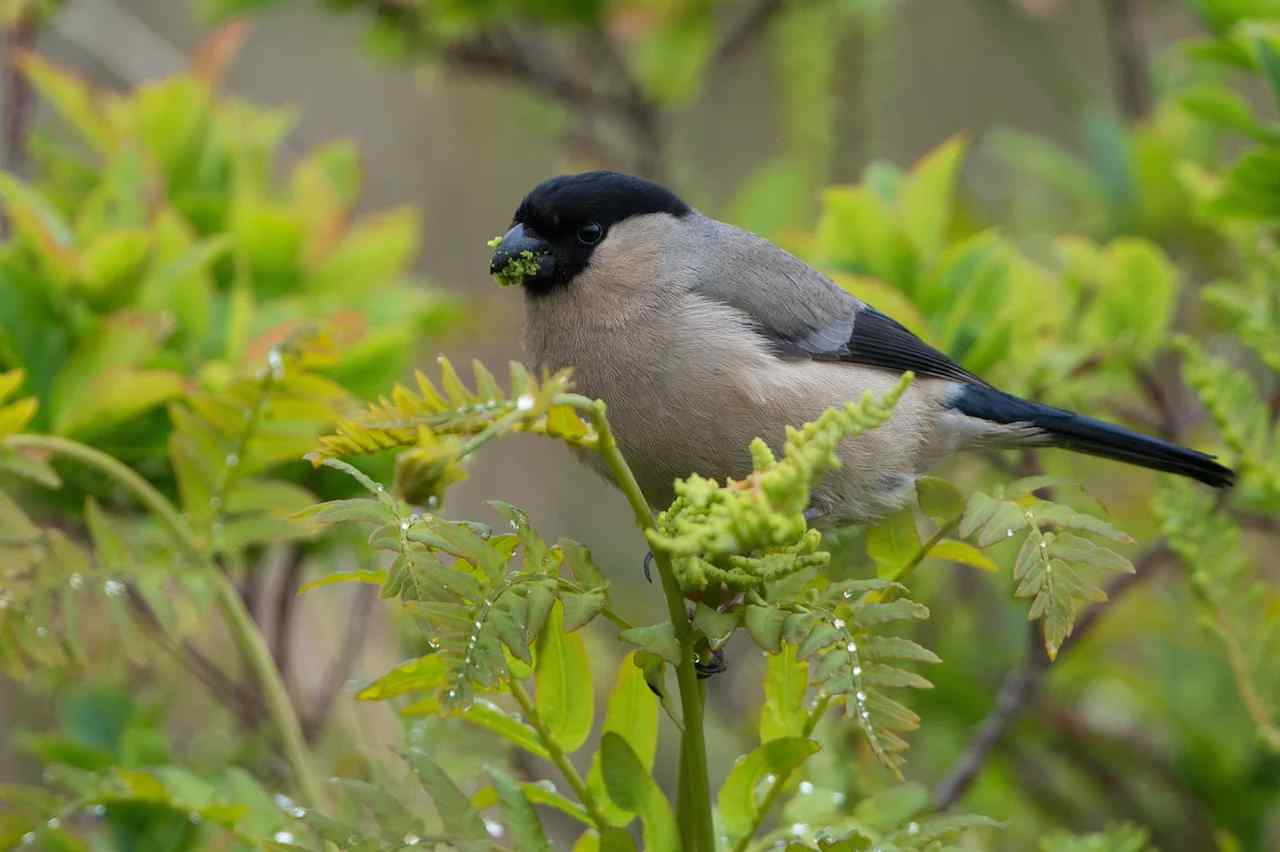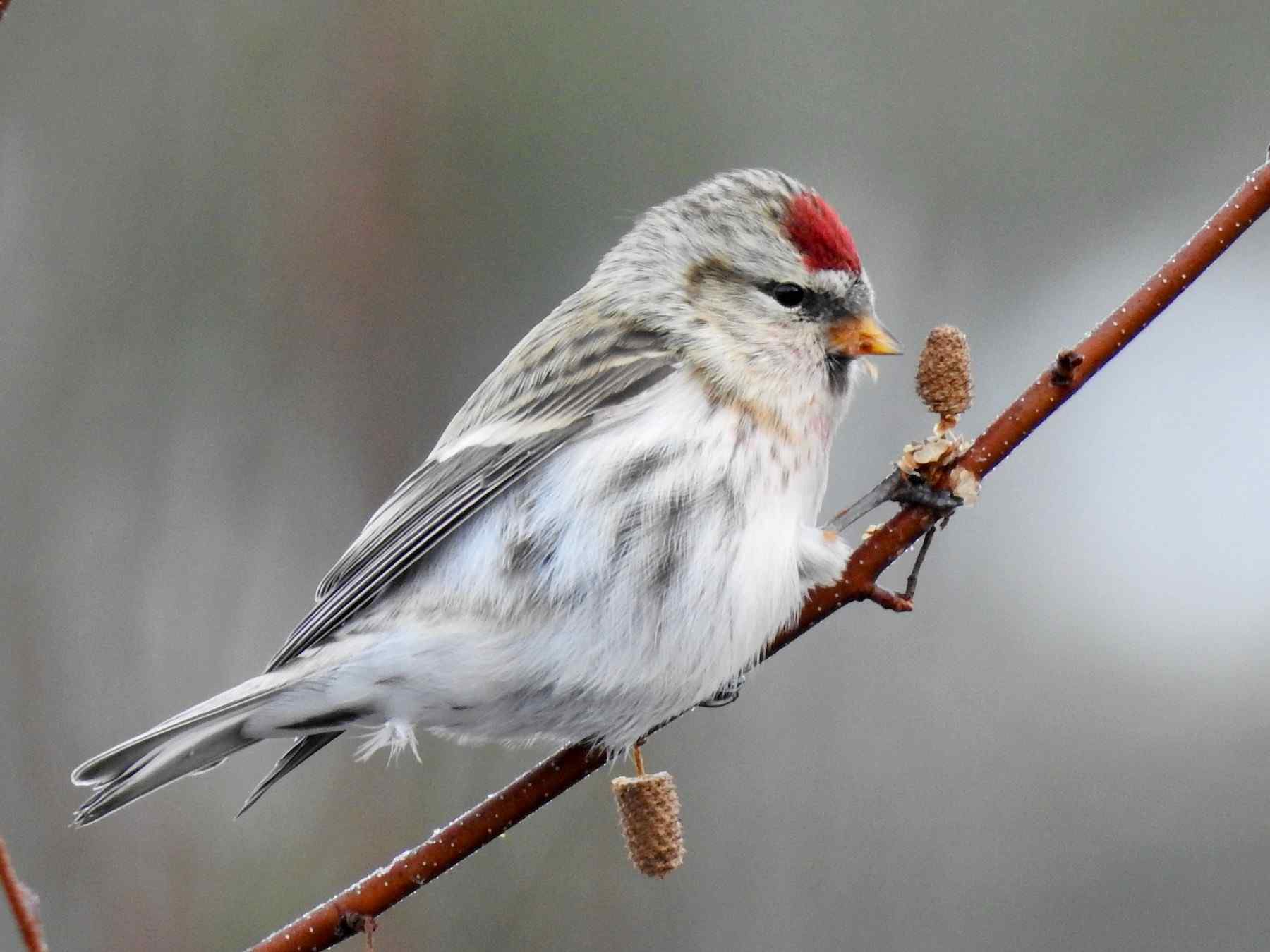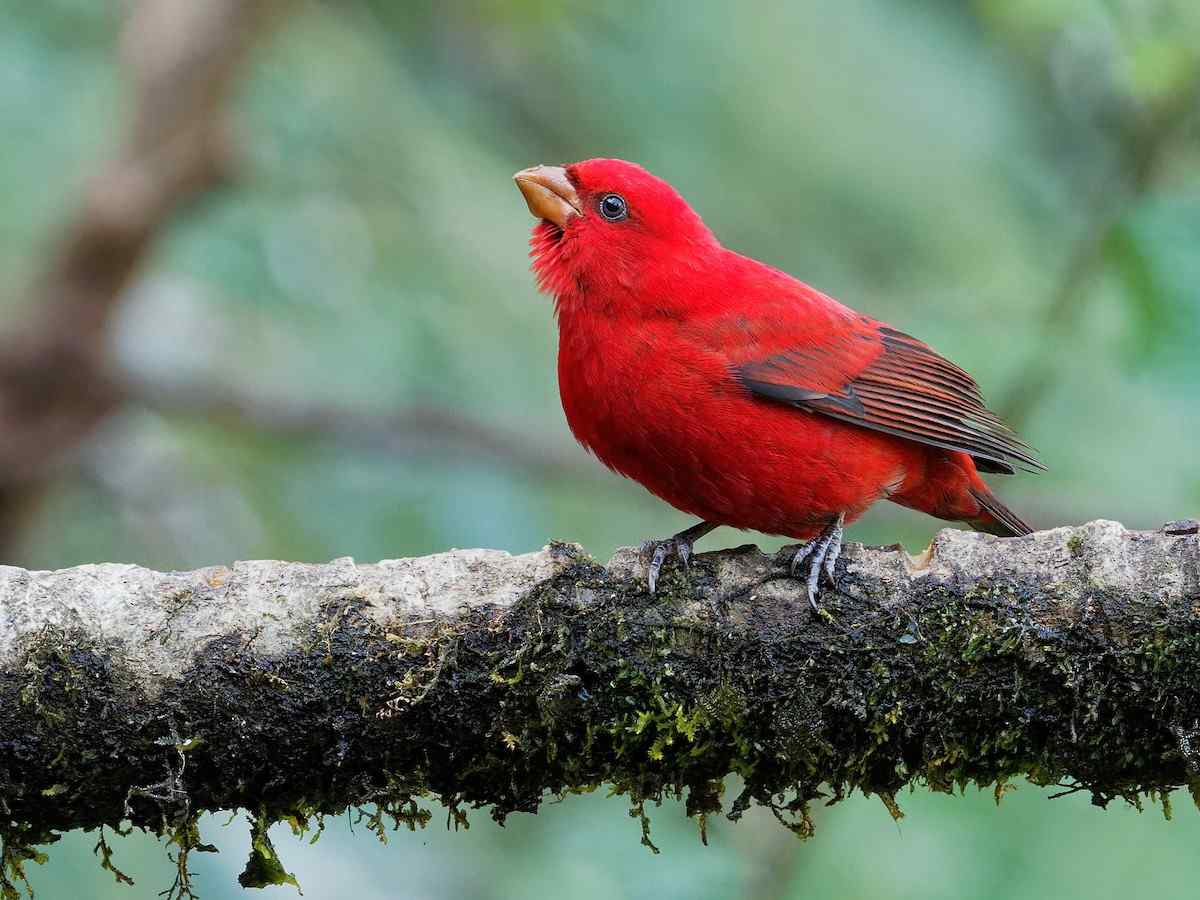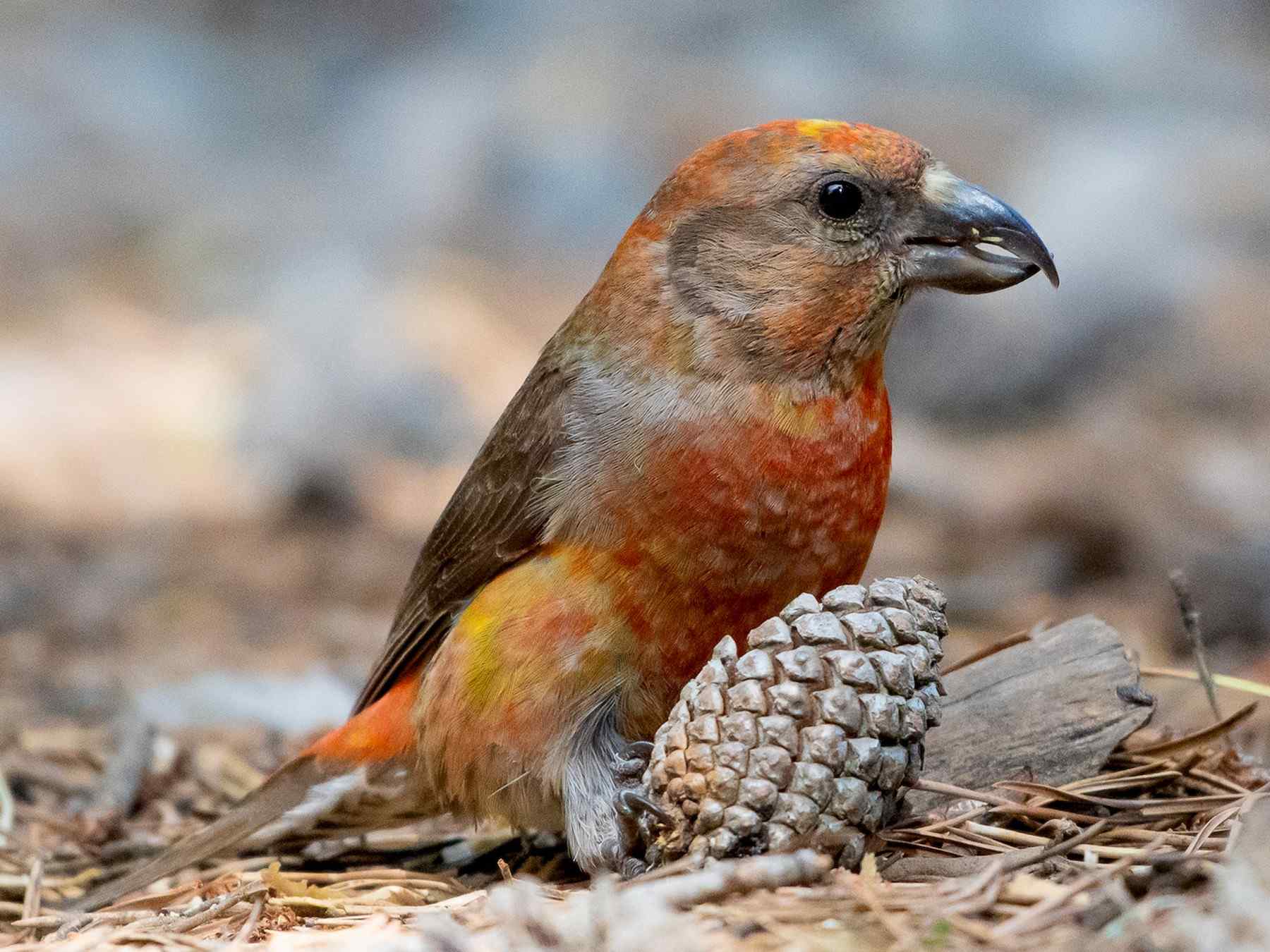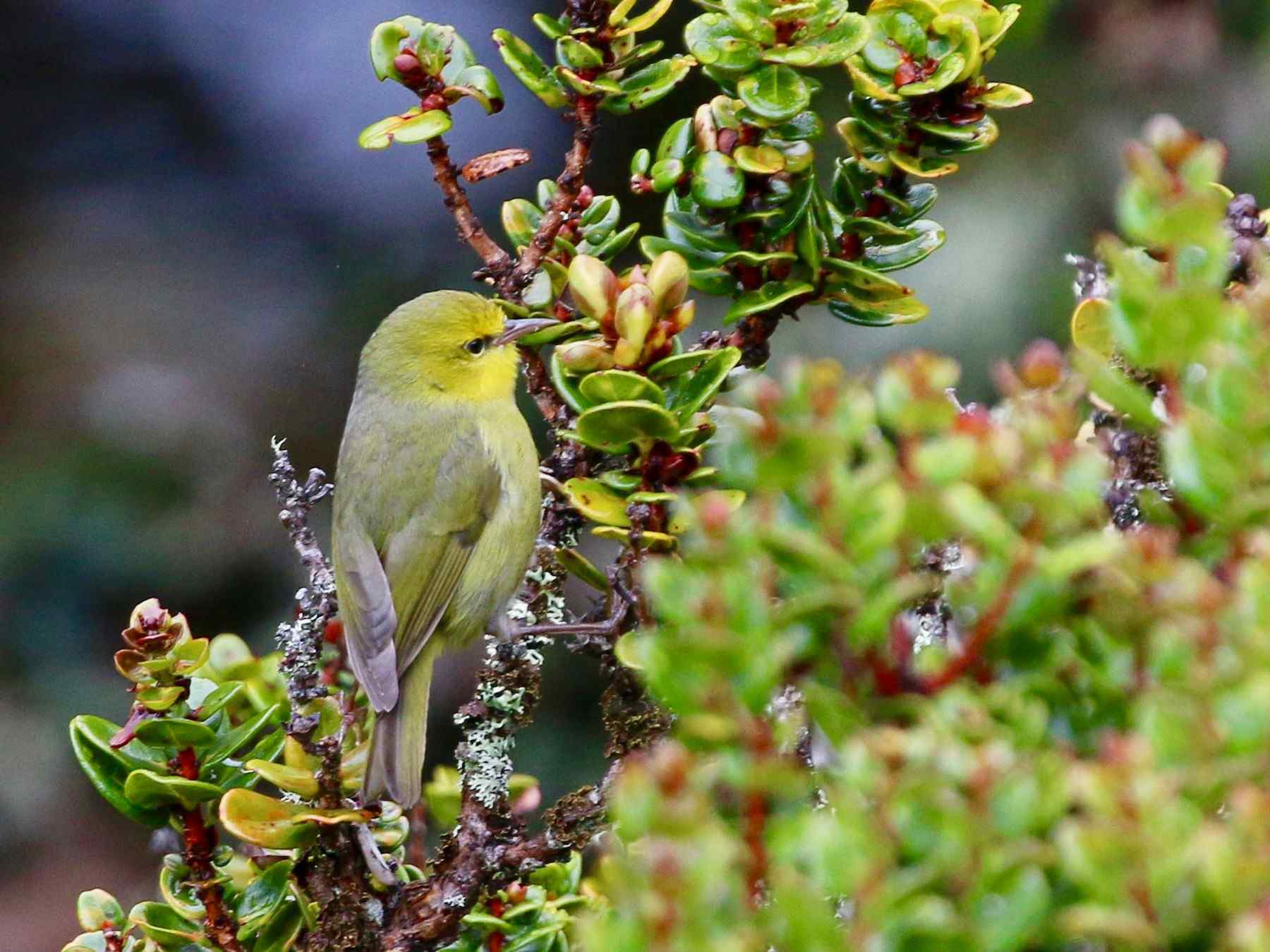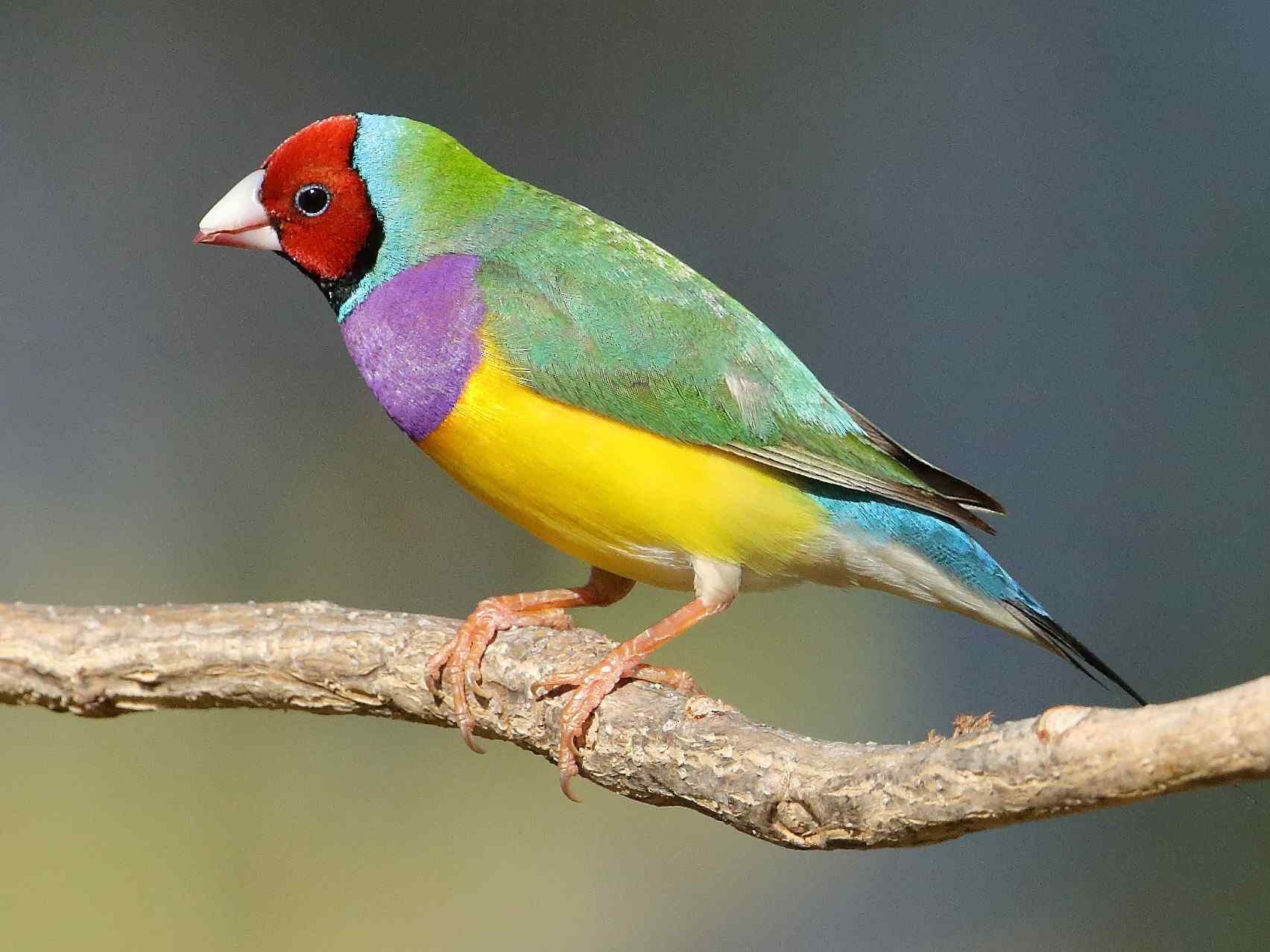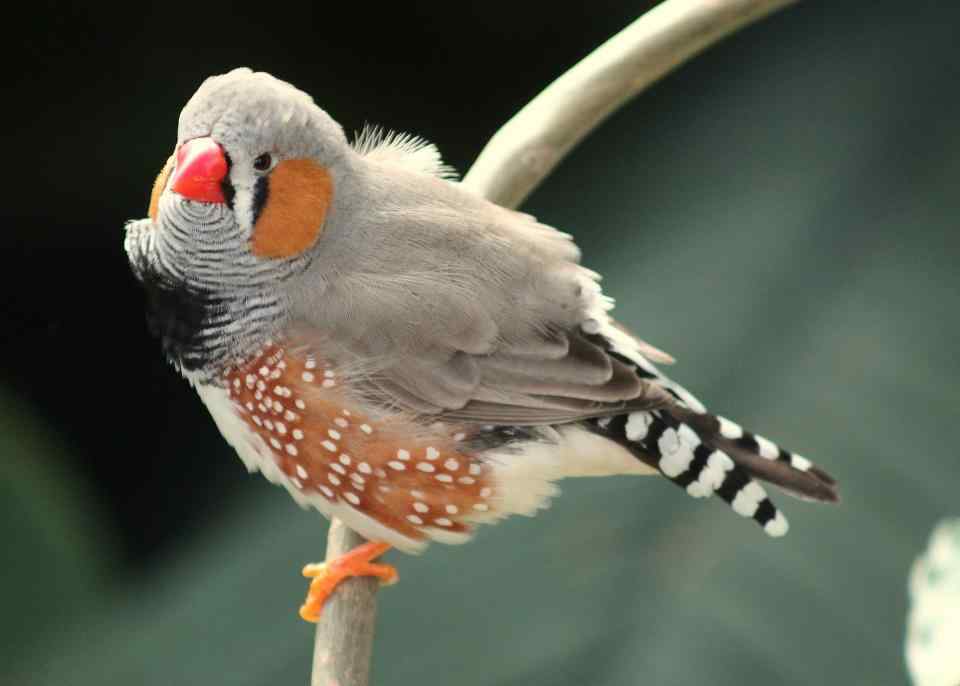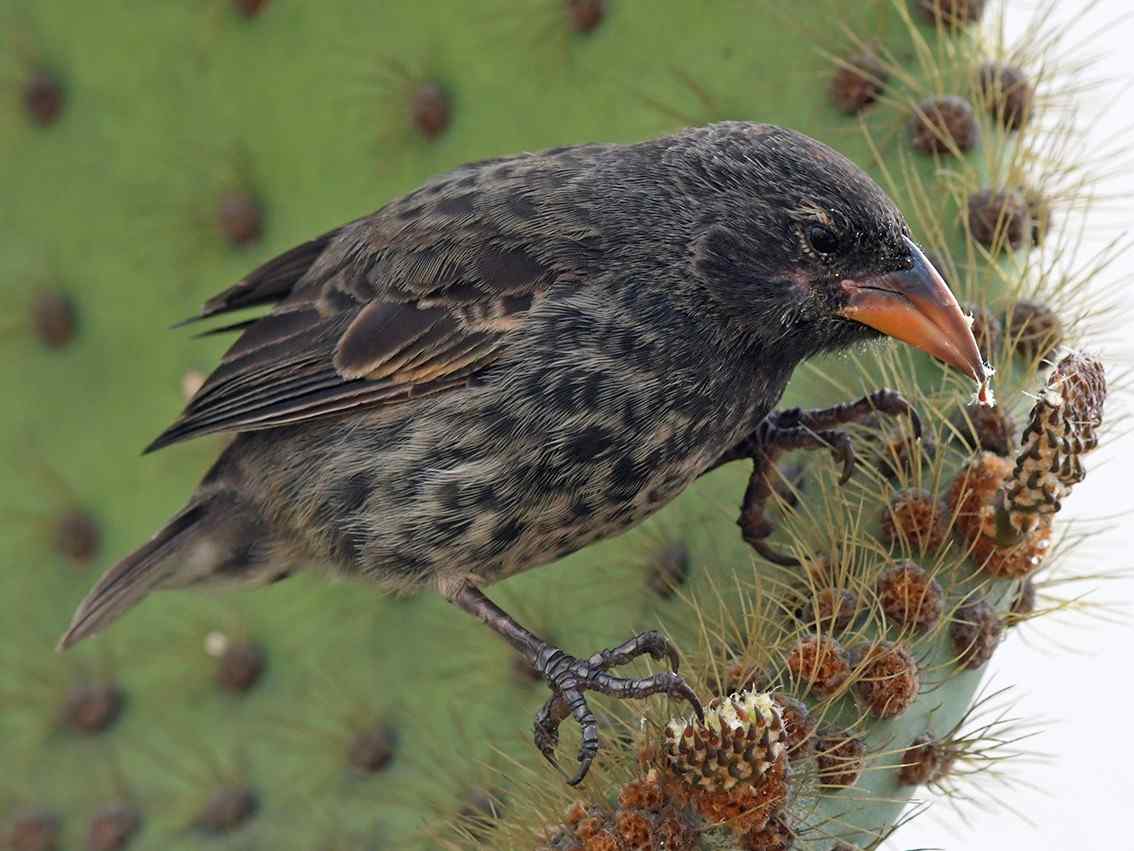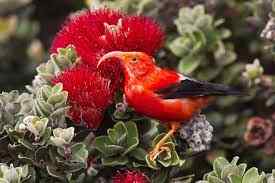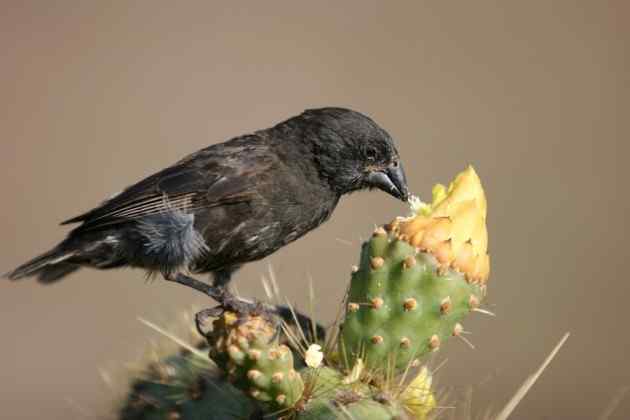Finches are a group of small to medium-sized passerine birds that belong to the family Fringillidae. They are found worldwide but are exceptionally diverse in the Galapagos Islands, where Charles Darwin famously observed and studied them during his voyage on the HMS Beagle. There are more than 100 types of finches worldwide and all of them are not equally important.
Finches have a compact body, short neck, and a short, conical beak adapted for cracking seeds. They are often brightly colored and have distinctive markings on their feathers. Some species, such as the Gouldian Finch, are kept as pets.
One of the most exciting features of finches is their ability to adapt to different environments and food sources. This has led to the development of different beak shapes and sizes among different species of finches. For example, the cactus finch on the Galapagos Islands has a long, curved beak specialized for feeding on cactus fruit, while the ground finch has a shorter, stouter beak that is better suited for cracking hard seeds.
Most Coon Types of Finches
There are many types of finches, with over 100 species found worldwide. Some of the most well-known types of finches include:
1. Cassin’s Finch
Cassin’s Finch (Haemorhous cassinii) is a small bird that belongs to the Fringillidae family of finches. It is found in western North America, from southern Alaska to northern Mexico. It is named after John Cassin, an American ornithologist who worked on the study of birds during the 19th century.
Cassin’s Finch is sexually dimorphic, meaning males and females have different plumage. Males have a bright red crown and breast, with a brownish back, wings, and tail. Females have a gray-brown head and body with a striped chest and belly. Both sexes have a conical beak that is adapted for cracking seeds.
These birds prefer coniferous forests and can be found in wooded areas near streams and mountain meadows. During the breeding season, males sing a complex and melodic song from perches in the treetops to attract a mate.
Cassin’s Finch primarily feeds on seeds, especially from coniferous trees such as pine and spruce. They also feed on insects during the breeding season to provide protein for their young. While Cassin’s Finch is not considered threatened, populations have declined in some areas due to habitat loss from logging and development.
2. Types of Finches: House Finch
The House Finch (Haemorhous mexicanus) is a small passerine bird native to western North America. The bird is known for its cheerful song and colorful plumage, which varies between individuals and regions. It is sometimes called the “Hollywood Finch” due to its popularity as a pet bird in the early 20th century.
House Finches are small birds with a length of around 5-6 inches (12-15 cm). They have a cone-shaped stout beak that is adapted for cracking open seeds. The male House Finch has a bright red head and breast, brownish back and wings, and a striped belly. The female is less colorful, with plain gray-brown plumage and streaked underparts. Juveniles have a similar appearance to females but with more streaking.
3. Purple Finch
The Purple Finch (Haemorhous purpureus) is a medium-sized finch that is found throughout North America. It is named for its bright, reddish-purple head and breast feathers on males, while females are brownish with a streaked underbelly.
Purple Finches are primarily seed-eaters, with a diet that includes seeds from trees, shrubs, and weeds. They also eat some insects during the breeding season, which provide a source of protein for their young.
These birds breed in coniferous and mixed forests and can be found in urban areas with suitable habitats. They build a cup-shaped nest from twigs, grass, and other materials in trees or shrubs. The female lays 3-5 blue-green eggs, which hatch after about two weeks. The young birds leave the nest after about 2-3 weeks and are fed by their parents for several weeks after fledging.
4. Types of Finches: Black Rosy-Finch
The Black Rosy-Finch (Leucosticte atrata) is a small passerine bird found in alpine and subalpine habitats of western North America, from the Rocky Mountains to the Sierra Nevada range. It is a member of the finch family, Fringillidae.
As its name suggests, the Black Rosy-Finch has black plumage with a rosy-pink wash on its belly, throat, and forehead. They have a short, conical beak adapted for cracking open seeds, which is their primary food source. They can also feed on insects during the breeding season to provide protein for their young.
These birds are adapted to cold and high-altitude environments and are known to roost in snow tunnels to conserve heat during the winter months. They build a cup-shaped nest of grasses, moss, and other materials on rocky ledges or crevices. The female lays 3-5 pale blue-green eggs, which hatch after about two weeks.
The Black Rosy-Finch is not considered threatened, but populations have declined in some areas due to habitat loss and disturbance from human activities, such as hiking and skiing. Conservation efforts include habitat restoration and monitoring populations in vulnerable areas.
5. Brown-Capped Rosy-Finch
The Brown-Capped Rosy-Finch (Leucosticte australis) is a small passerine bird found in high-altitude habitats of western North America, particularly in the Rocky Mountains. It is a member of the finch family Fringillidae and is closely related to the Black Rosy-Finch.
As its name suggests, the Brown-Capped Rosy-Finch has a brown cap on its head, contrasting with its grayish-brown body plumage. Its wings and tail are dark with white wing bars, and it has a rosy-pink wash on its belly, throat, and forehead. Like other rosy finches, it has a short, conical beak adapted for cracking open seeds.
These birds are adapted to cold and high-altitude environments and are known to roost in snow tunnels to conserve heat during the winter months. They build a cup-shaped nest of grasses, moss, and other materials on rocky ledges or crevices. The female lays 3-5 pale blue-green eggs, which hatch after about two weeks.
The Brown-Capped Rosy-Finch is not considered threatened, but populations have declined in some areas due to habitat loss and disturbance from human activities, such as hiking and skiing. Conservation efforts include habitat restoration and monitoring populations in vulnerable areas.
6. Grey-crowned Rosy-Finch
The Grey-crowned Rosy-Finch (Leucosticte tephrocotis) is a small passerine bird found in high-altitude habitats of western North America, particularly in the Rocky Mountains and the Sierra Nevada range. It is a member of the finch family Fringillidae and is closely related to the Brown-Capped Rosy-Finch and the Black Rosy-Finch.
As its name suggests, the Grey-crowned Rosy-Finch has a gray cap on its head, contrasting with its brownish-gray body plumage. Its wings and tail are dark with white wing bars, and it has a rosy-pink wash on its belly, throat, and forehead. Like other rosy finches, it has a short, conical beak adapted for cracking open seeds.
These birds are adapted to cold and high-altitude environments and are known to roost in snow tunnels to conserve heat during the winter months. They build a cup-shaped nest of grasses, moss, and other materials on rocky ledges or crevices. The female lays 3-5 pale blue-green eggs, which hatch after about two weeks.
The Grey-crowned Rosy-Finch is not considered threatened, but populations have declined in some areas due to habitat loss and disturbance from human activities, such as hiking and skiing. Conservation efforts include habitat restoration and monitoring populations in vulnerable areas.
7. Types of Finches: American Gold Finch
The American Goldfinch (Spinus tristis) is a small passerine bird in most North America. It is a member of the finch family Fringillidae and is known for its bright yellow plumage during the breeding season.
During the winter, the male’s bright yellow feathers are replaced by duller, olive-brown feathers, making them more challenging to spot. Females have a more muted yellow coloration year-round. Both sexes have black wings with white wing bars and a black tail with white markings.
American Goldfinches are primarily granivorous, feeding on seeds from various plants, including thistles, sunflowers, and dandelions. They will also feed on insects during the breeding season to provide protein for their young. They are known for their acrobatic feeding behavior, often clinging to the underside of seed heads to reach the seeds.
These birds are monogamous and form pairs during the breeding season. They build a cup-shaped nest of plant fibers and spider webs lined with soft materials such as thistledown. The female lays 4-6 pale blue-green eggs, which hatch after about two weeks.
The American Goldfinch is not considered threatened and is a common sight at bird feeders throughout North America. They are particularly fond of nyjer seed, often seen in flocks in open fields and meadows.
8. Lawrence’s Gold Finch
Lawrence’s Goldfinch (Spinus Lawrence) is a small passerine bird that is found in the western United States and northwestern Mexico. It is a member of the finch family Fringillidae and is closely related to the American Goldfinch.
During the breeding season, male Lawrence’s Goldfinches have bright yellow and black plumage, with a black face and throat and a yellow belly and back. Females are more muted in color, with grayish-brown and yellow plumage. Both sexes have black wings with white wing bars and a black tail with white markings.
Lawrence’s Goldfinches are primarily granivorous, feeding on seeds from various plants, including thistles, sunflowers, and dandelions. They will also feed on insects during the breeding season to provide protein for their young.
These birds are monogamous and form pairs during the breeding season. They build a cup-shaped nest of plant fibers and spider webs lined with soft materials such as thistledown. The female lays 3-5 pale blue-green eggs, which hatch after about two weeks.
Lawrence’s Goldfinch is not considered threatened, but populations have declined in some areas due to habitat loss and disturbance from human activities. Conservation efforts include habitat restoration and monitoring populations in vulnerable areas.
9. Types of Finches: Lesser Goldfinch
The Lesser Goldfinch (Spinus psaltria) is a small passerine bird from southern Canada to northern Mexico in western North America. It is a member of the finch family Fringillidae and is closely related to the American and Lawrence Goldfinch.
The male Lesser Goldfinch has bright yellow and black plumage, with a black face and throat and a yellow belly and back. The female is more muted in color, with olive green and yellow plumage. Both sexes have black wings with white wing bars and a black tail with white markings.
Lesser Goldfinches are primarily granivorous, feeding on seeds from various plants, including thistles, sunflowers, and dandelions. They will also feed on insects during the breeding season to provide protein for their young.
These birds are monogamous and form pairs during the breeding season. They build a cup-shaped nest of plant fibers and spider webs lined with soft materials such as thistledown. The female lays 3-5 pale blue-green eggs, which hatch after about two weeks.
10. Pine Siskin
The Pine Siskin (Spinus pinus) is a small passerine bird that breeds in the coniferous forests of North America and Eurasia. It is a member of the finch family Fringillidae and is closely related to the American Goldfinch and the Lesser Goldfinches.
Pine Siskins are small, brownish birds with yellow and black markings on their wings and tail. They have a distinctive streaky pattern on their backs and sides and a short, conical bill for cracking seeds. The males and females look similar, but the males may have slightly brighter yellow coloring.
Pine Siskins are primarily granivorous and feed on the seeds of conifer trees, as well as seeds from other plants such as thistles and grasses. During the winter, they may visit bird feeders for sunflower or nyjer seeds.
These birds are often found in flocks and have a nomadic lifestyle, moving to different areas in search of food. They breed in the spring and summer, building a cup-shaped nest made of twigs, grass, and lichen. The female lays 3-5 pale blue-green eggs, which hatch after about two weeks.
11. Evening Grosbeak
The Evening Grosbeak (Coccothraustes vespertinus) is a large finch found in North America. It has a distinctive yellow and black plumage, with a large, heavy bill adapted for cracking seeds.
The male Evening Grosbeak has a bright yellow forehead with a black crown, wings, and tail. Its back and sides are olive-yellow, and its underparts are yellow. The female is similar in coloration but has a more subdued yellow and a brownish-gray crown.
Evening Grosbeaks are primarily granivorous, feeding on the seeds of various trees, including conifers, maples, and elms. They may also feed on insects during the breeding season.
These birds are known for their large flocks and irruptive migrations, where they may move long distances for food. They breed in coniferous forests in spring and summer, building a cup-shaped nest made of twigs, bark, and grass. The female lays 2-5 eggs, which hatch after about two weeks.
The Evening Grosbeak is not considered threatened, but its populations have experienced declines in some areas due to habitat loss and fragmentation. Conservation efforts include habitat restoration and monitoring populations in vulnerable areas.
12. Types of Finches: Red-crossbill
The Red Crossbill (Loxia curvirostra) is a medium-sized finch throughout North America, Europe, and Asia. It is named for its unique bill, crossed at the tips, allowing it to extract seeds from conifer cones.
The plumage of the Red Crossbill varies depending on the subspecies and sex, but generally, it is a streaky brown bird with greenish-yellow highlights. Males are often brighter and more colorful than females, and both sexes have distinctive head shapes with thick necks and large heads.
Red Crossbills are primarily granivorous, feeding on the seeds of conifer cones. They use their unique bill to pry open the scales of the cones and extract the seeds. They may also feed on other seeds and insects during the breeding season.
These birds are known for their nomadic lifestyle and may move long distances in search of food. They breed throughout the year, building a cup-shaped nest of twigs and grass, usually in a conifer tree. The female lays 2-5 eggs, which hatch after about two weeks.
13. Types of Finches: Common Goldfinch
The Common Goldfinch (Carduelis carduelis) is a small passerine bird found throughout Europe, North Africa, and western Asia. It is a member of the finch family Fringillidae and is known for its striking plumage and melodious song.
The Common Goldfinch has a distinctive red face and black and white head markings. Its body is a yellow, black, and white mix, with black wings and a white rump. The male and female look similar, but the male may have slightly brighter colors.
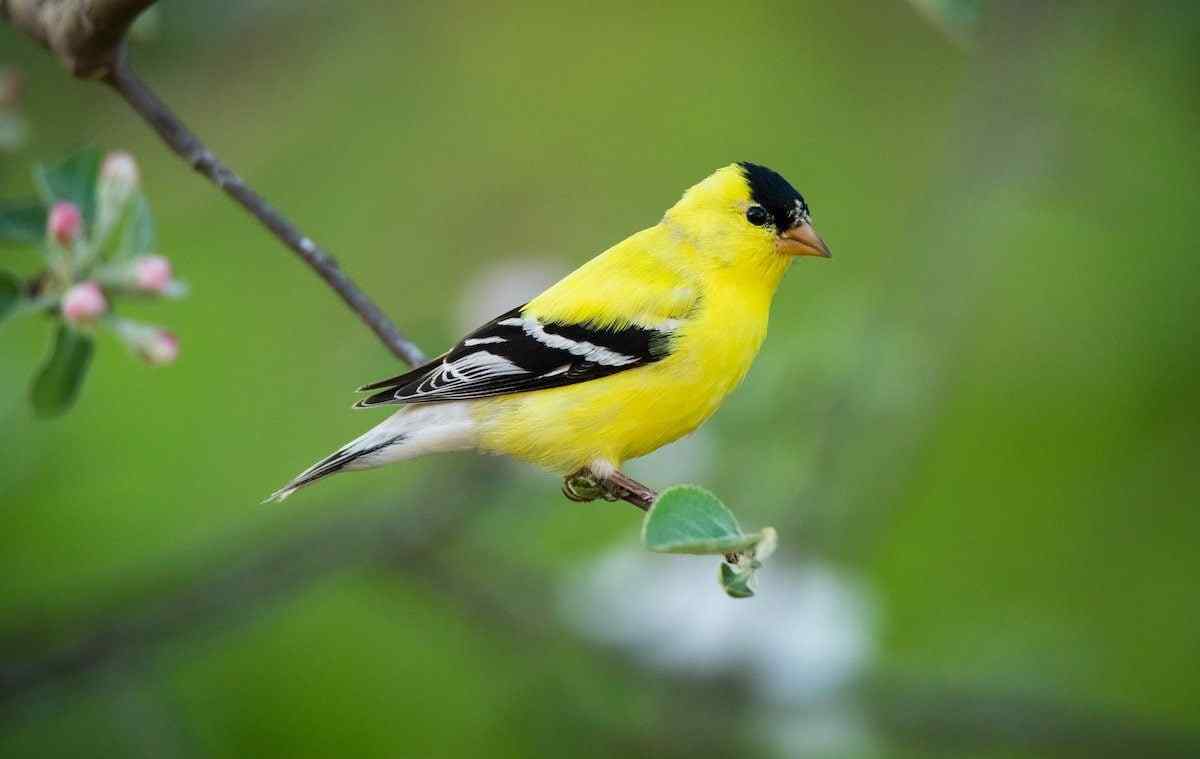
Gold finches are primarily granivorous, feeding on the seeds of thistles and other plants. They may also feed on insects during the breeding season. They are known for their acrobatic feeding behavior, hanging upside down to extract plant seeds. These birds are typically found in open woodland and gardens and are known for their sweet, twittering songs. They breed in spring and summer, building a cup-shaped twig, grass, and moss nest. The female lays 4-6 pale blue eggs, which hatch after about two weeks.
14. Brambling Finch
The Brambling Finch (Fringilla montifringilla) is a small passerine bird that is found in northern Europe and Asia. It is a member of the finch family Fringillidae and is known for its distinctive plumage during the breeding season.
The male Brambling Finch has a bright orange breast and upper parts with black and white wing feathers. The female is more subdued, with brownish-grey upperparts and buffy-brown breasts. In the non-breeding season, both sexes are more uniformly brown and streaked.
Brambling Finches are primarily granivorous, feeding on the seeds of trees and shrubs such as birch, alder, and spruce. They may also feed on insects during the breeding season.
These birds breed in the northern boreal forests of Europe and Asia during the spring and summer, building a cup-shaped nest made of twigs, grass, and moss. The female lays 4-6 blue-green eggs, which hatch after about two weeks.
15. Types of Finches: Hawfinch
The Hawfinch (Coccothraustes coccothraustes) is a large passerine bird in Europe and Asia. It is a member of the finch family Fringillidae and is known for its striking appearance and robust bill.
The Hawfinch has a distinctive thick and powerful bill, which it uses to crack open the seeds of hard-shelled fruits such as cherry stones and plum pits. Its plumage is brownish-red with black and white wing feathers and a short tail. The male and female look similar, but the male may have a slightly larger bill.
Hawfinches are primarily frugivorous, feeding on the seeds of trees and shrubs such as hawthorn, cherry, and oak. They may also feed on insects and their larvae during the breeding season.
These birds are typically found in deciduous and mixed forests and are known for their loud, harsh calls. They breed in the spring and summer, building a cup-shaped nest made of twigs, grass, and roots. The female lays 2-7 pale blue-green eggs, which hatch after about two weeks.
16. Desert Finch
There are several species of finches that are commonly known as “desert finches,” but one of the most notable is the Desert Finch (Rhodospiza obsoleta). It is a small passerine bird that is found in arid and semi-arid regions of North Africa and the Middle East.
The Desert Finch has distinctive plumage, a pinkish-brown body, and black and white banded wings. The male has a darker head and breast than the female, and during the breeding season, the male may have a slightly brighter plumage.
Desert Finches are primarily granivorous, feeding on the seeds of desert plants such as acacia, tamarisk, and grasses. They may also feed on insects and their larvae during the breeding season.
These birds are typically found in desert and scrubland habitats and are known for their sweet, twittering song. They breed in the spring and summer, building a cup-shaped nest made of twigs, grass, and roots. The female lays 3-5 pale blue-green eggs, which hatch after about two weeks.
17. Brimstone Canary
The Brimstone Canary (Serinus sulphuratus) is a small passerine bird native to southern Africa. It is a member of the finch family Fringillidae, known for its bright yellow and green plumage.
The male Brimstone Canary has bright yellow underparts, green upper parts, and a distinctive black and white striped head. The female is less brightly colored, with a more muted yellow-green plumage. Both sexes have a short, conical bill.
Brimstone Canaries are primarily seed-eaters, feeding on various seeds from grasses and other plants. They may also feed on small insects and their larvae during breeding. These birds are typically found in savanna and grassland habitats and are known for their sweet, twittering song. They breed in the summer and build a cup-shaped nest made of grass and twigs. The female lays 2-5 pale blue-green eggs, which hatch after about two weeks.
18. Types of Finches: White-winged Crossbill
The White-winged Crossbill (Loxia leucoptera) is a medium-sized passerine bird that is found in the boreal forests of North America and Eurasia. It is a member of the finch family Fringillidae and is known for its unique crossed bill, which it uses to extract seeds from conifer cones.
The White-winged Crossbill has a distinctive plumage, with males typically having red bodies and wings, while females are yellow-green with brown streaks. Both sexes have white wing bars, and their bills are crossed at the tips, which allows them to easily pry open the scales of conifer cones to access the seeds inside.
White-winged Crossbills are primarily granivorous, feeding almost exclusively on the seeds of conifer trees such as spruce, fir, and pine. They may also feed on insects and their larvae during the breeding season.
These birds are typically found in coniferous forests, known for twittering calls and occasional songs. They breed in the spring and summer, building a cup-shaped nest of twigs, grass, and bark. The female lays 2-4 pale blue-green eggs, which hatch after about two weeks.
19. Eurasian Bullfinch
The Eurasian Bullfinch (Pyrrhula pyrrhula) is a small, stocky passerine bird across Europe and Asia. It is a member of the finch family Fringillidae and is known for its distinctive red breast and black cap.
The male Eurasian Bullfinch has bright red breasts and cheeks, while the female has a more muted grayish-pink breast. Both sexes have a black cap, grayish-blue back, white wing bars, and a short, conical bill.
Eurasian Bullfinches are primarily seed-eaters, feeding on a variety of seeds from trees and shrubs such as birch, alder, and hawthorn. They may also feed on buds, fruit, and insects during breeding.
These birds are typically found in deciduous and mixed forests, and they are known for their distinctive call, which sounds like a clear, ringing “pink.” They breed in the spring and summer, building a cup-shaped nest made of twigs, moss, and lichen. The female lays 4-5 pale blue eggs, which hatch after about two weeks.
The Eurasian Bullfinch is not considered threatened, but its populations have declined in some areas due to habitat loss and fragmentation.
20. Types of Finches: Azores Bullfinch
Azores are a group of volcanic islands located in the North Atlantic Ocean. It is a member of the finch family Fringillidae and is known for its unique plumage and distinctive call.
The Azores Bullfinch is a plump bird with a short, conical bill and distinctive grayish-brown plumage with dark streaks on the back and wings. The male has a bright red patch on its forehead, while the female has a more minor, paler patch. Both sexes have a distinctive call that sounds like “zwee.”
The Azores Bullfinch is primarily a seed eater, feeding on various seeds from trees and shrubs such as juniper, cedar, and laurel. They may also feed on buds, fruit, and insects during breeding.
These birds are typically found in the humid laurel forests of the Azores and are known for their shy and secretive nature. They breed in the spring and summer, building a cup-shaped nest made of twigs, moss, and lichen. The female lays 2-4 pale blue eggs, which hatch after about two weeks.
The Azores Bullfinch is endangered due to habitat loss, fragmentation, and predation by introduced mammals such as rats and cats.
21. Common Redpoll
The Common Redpoll (Acanthis flammea) is a small finch that breeds in the Arctic regions of Eurasia and North America. It is a member of the Fringillidae family and is known for its distinctive red forehead patch and streaky brown plumage.
Common Redpolls are small, compact birds with short, conical bills. They have streaky brown plumage, black wings, and a bright red forehead patch. Males may also develop a rosy pink wash on their chest and sides during breeding.
Common Redpolls primarily feed on seeds, especially those of birch and alder trees, but they may also feed on buds and insects during the breeding season. They are highly social birds and often form large flocks during the winter.
During the breeding season, Common Redpolls nest in trees or shrubs, building a cup-shaped nest made of twigs, grass, and lichen. The female lays 4-6 pale blue eggs, which hatch after about two weeks.
Common Redpolls are found in a wide range of habitats, including tundra, taiga, and boreal forests. They are known for their distinctive trilling song, which sounds like “twee-twee-twee.”
22. Types of Finches: Hoary Redpoll
The Hoary Redpoll (Acanthis hornemanni) is a small passerine bird that breeds in the Arctic regions of North America and Eurasia. It is a member of the Fringillidae family and is closely related to the Common Redpoll, but is slightly larger and paler in color.
Hoary Redpolls are small, compact birds with short, conical bills. They have streaky brown and white plumage and distinctive pale rump and white wing bars. Males may also have a pink wash on their breasts and a red forehead patch, similar to the Common Redpoll.
Hoary Redpolls feed primarily on seeds, especially those of birch and alder trees, but may also eat buds and insects during the breeding season. They are highly social birds and often form large flocks during the winter.
During the breeding season, Hoary Redpolls nest in shrubs or trees, building a cup-shaped nest made of twigs, grass, and lichen. The female lays 4-6 pale blue eggs, which hatch after about two weeks.
Hoary Redpolls are found in various habitats, including tundra, taiga, and boreal forests. They have a high-pitched trilling song, similar to the Common Redpoll.
23. Types of Finches: Scarlet Finch
Scarlet Tanager (Piranga olivacea) is a small-to-medium-sized songbird in the eastern United States and parts of South America. The male of the species is known for its striking bright red plumage with contrasting black wings, while the female is olive-yellow.
Scarlet Tanagers are known for their melodic song and are often found in deciduous forests during the breeding season. They feed primarily on insects and fruit. Scarlet Tanagers are not considered threatened, but their populations can be affected by habitat loss and fragmentation.
24. Cassia Crossbill
The Cassia Crossbill (Loxia sinesciuris) is a Finch species endemic to southern Idaho in the United States. The Cassia Crossbill was recognized as a distinct species in 2017 and is one of only two bird species in North America that is considered to have evolved due to recent changes in their habitat.
The Cassia Crossbill has a uniquely shaped bill adapted for feeding on the lodgepole pine cones, which is the species of tree that dominates their habitat. The bill is thicker and shorter than the closely related Red Crossbill and is specialized for prying open the tightly closed cones of the lodgepole pine.
Cassia Crossbills are sexually dimorphic, with males having bright red plumage and females being a duller yellow-green color. They are typically found in small family groups and are often heard before they are seen, as they have a distinctive call.
The Cassia Crossbill is currently listed as a threatened species due to its limited size and extent of its range and the ongoing threat of habitat loss and degradation caused by human activities. Conservation efforts are underway to monitor and protect this unique and specialized bird species.
25. Types of Finches: Maui Alauahio
The Maui Alauahio (Paroreomyza montana), also known as the Maui Creeper or Maui Nukupu’u, is a small, critically endangered bird species endemic to the island of Maui in Hawaii. The bird’s name in Hawaiian means “mountain creeping hemis,” and it is a member of the Hawaiian honeycreeper family.
The Maui Alauahio has an olive-green plumage with a yellow throat, and it has a thin, pointed bill adapted for feeding on insects and spiders in the bark and foliage of trees. It is found primarily in the wet forests of Haleakala and West Maui Mountains at elevations between 4,000 and 7,000 feet.
Like many other native Hawaiian bird species, the Maui Alauahio has been severely impacted by habitat loss and degradation caused by introduced species, such as feral pigs and goats, as well as habitat alteration and fragmentation caused by human activities. In addition, the species is also threatened by avian diseases, such as avian malaria and pox, which are transmitted by introduced mosquitoes.
Conservation efforts are underway to protect the remaining populations of Maui Alauahio and to restore their habitat. These efforts include the control of invasive species, the removal of feral ungulates, the restoration of native forests, and the establishment of captive breeding programs. However, the Maui Alauahio remains one of Hawaii’s most endangered bird species, with fewer than 500 individuals estimated to be left in the wild.
26. Types of Finches: Gouldian Finch
The Gouldian Finch is a colorful species native to northern Australia, known for its bright blue, green, and red plumage.
27. Zebra Finch
The Zebra Finch is a small, social species native to Australia, often kept as a pet due to its cheerful song and uncomplicated care requirements.
28. Cactus Finch
The Cactus Finches is a bird found only on the Galapagos Islands, known for its long, curved beak that is specialized for feeding on cactus fruit.
29. Types of Finches: Hawaiian Honeycreeper
The Hawaiian Honeycreeper Finches are a group of colorful, nectar-feeding finches found only in Hawaii, many of which are endangered due to habitat loss and introduced predators.
30. Darwin’s Finches
The Darwin’s Finches are a group of 14 species found only on the Galapagos Islands. They are known for their varied beak shapes and sizes and their role in Darwin’s theory of evolution by natural selection.
Final Talk on Types of Finches
Finches are a diverse group of small to medium-sized birds found worldwide. There are many species of finches, each with unique characteristics and adaptations. Some finch species are known for their brightly colored plumage, while others are known for their unique beaks and feeding habits.
